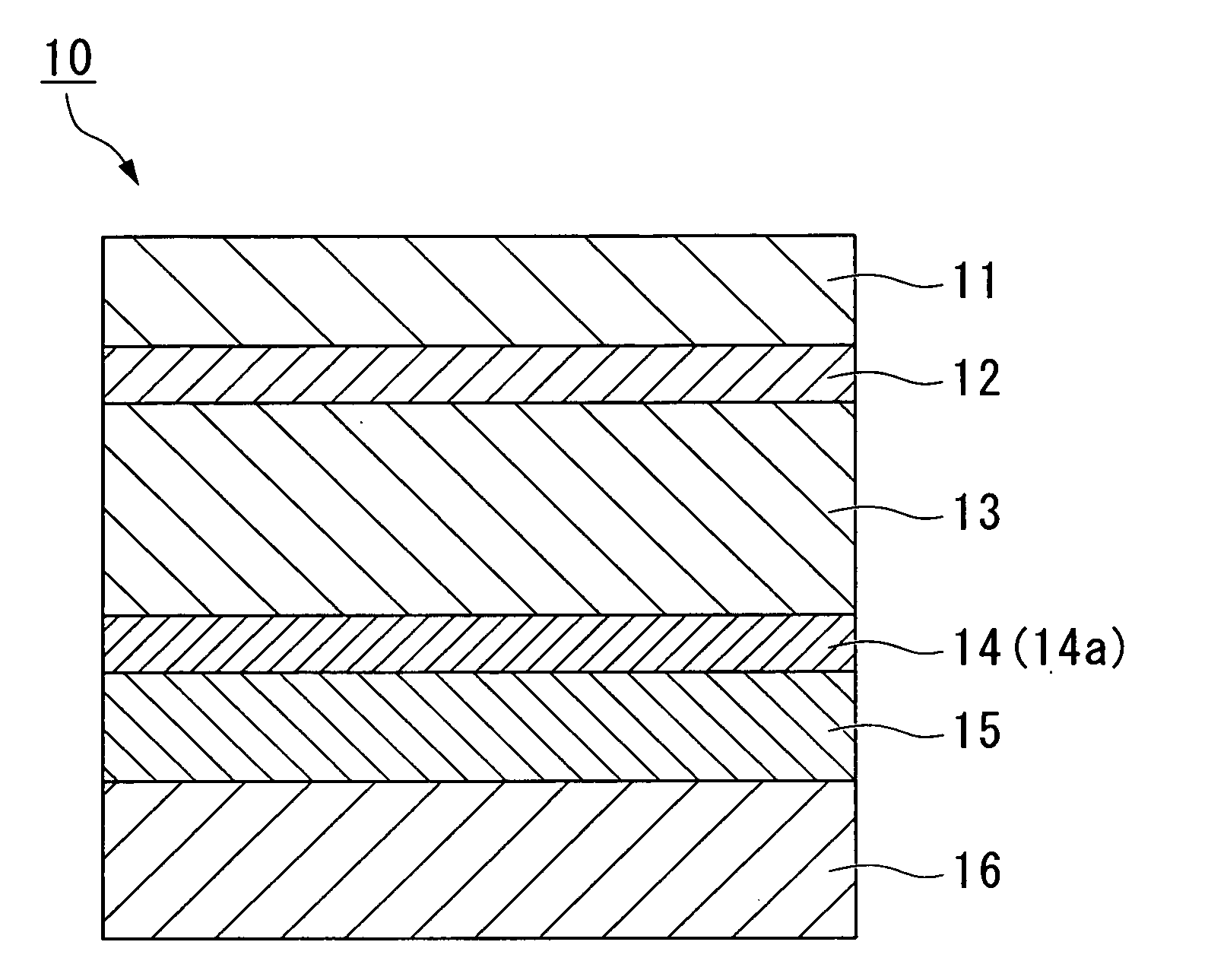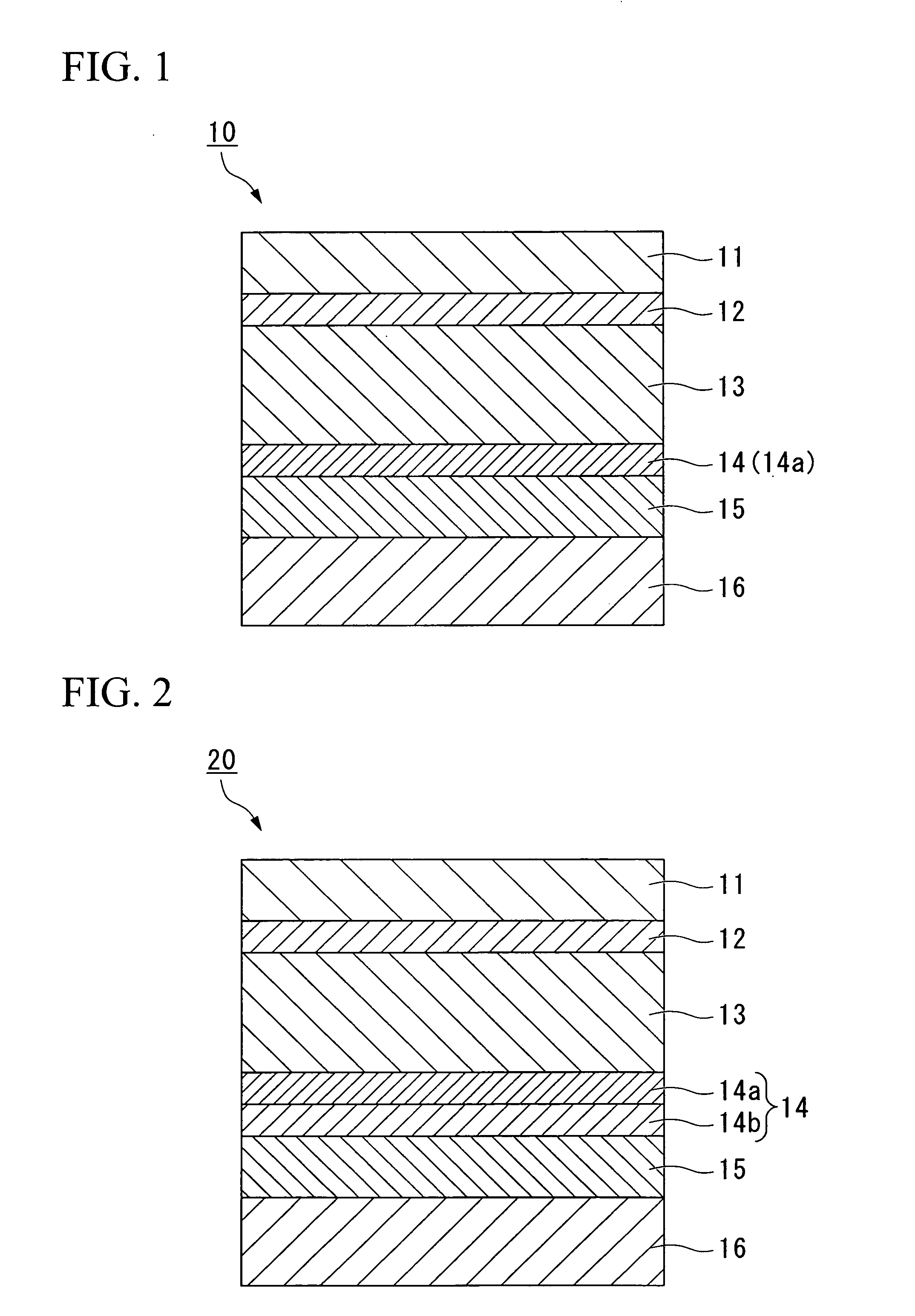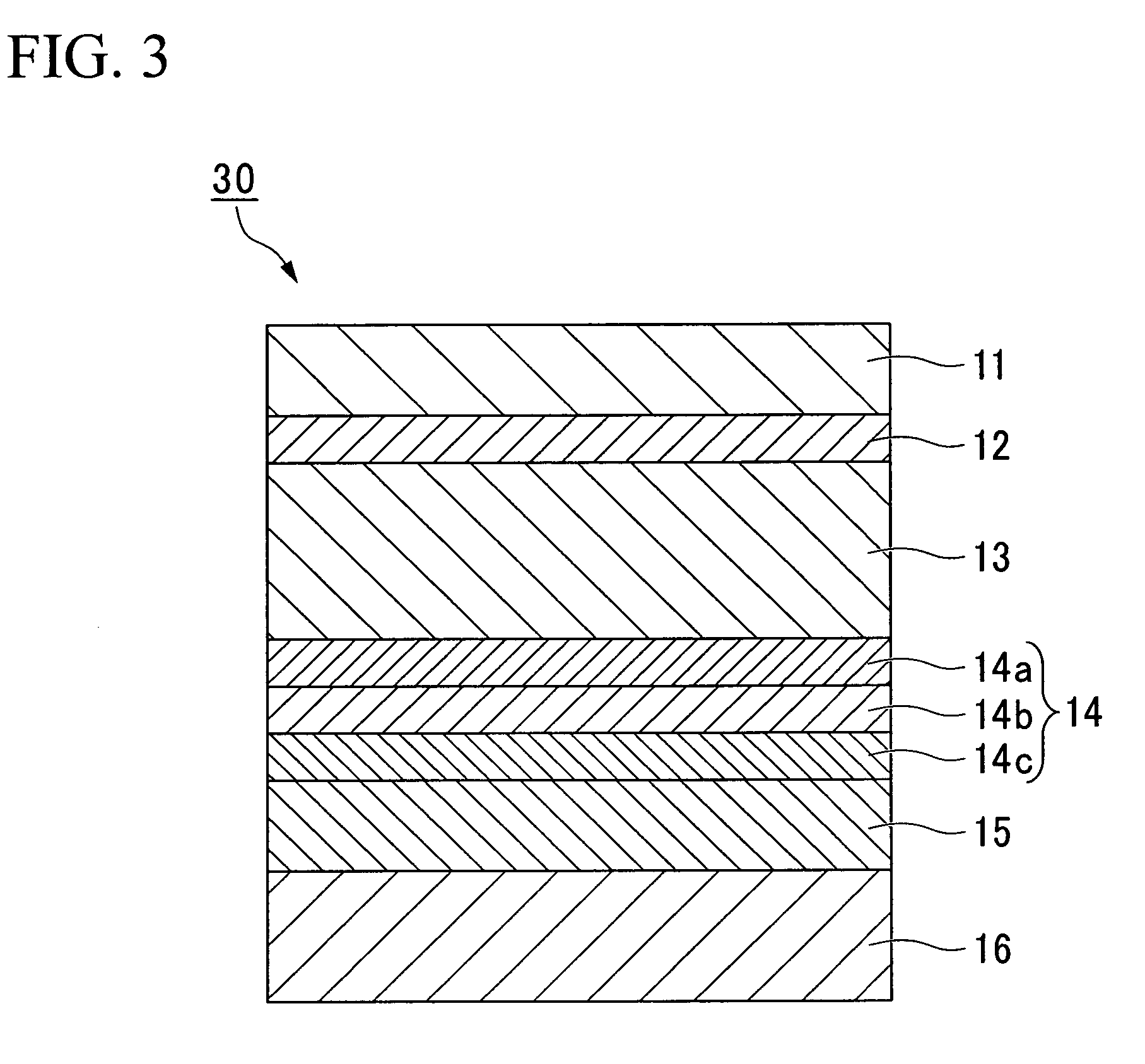Packing material for lithium cell and production method thereof
a lithium cell and lithium cell technology, applied in domestic packaging, packaging, synthetic resin layered products, etc., can solve the problems of metal surface corrosion, aluminum foil layer and thermal adhesive film layer strength tending to deteriorate, and leakage of electrolyte solution, etc., to achieve excellent electrolyte solution resistance, water resistance, and simple production steps
- Summary
- Abstract
- Description
- Claims
- Application Information
AI Technical Summary
Benefits of technology
Problems solved by technology
Method used
Image
Examples
first embodiment
[0054]FIG. 1 is a cross-sectional view illustrating a first embodiment of a packing material for a lithium cell according to the present invention. The lithium cell packing material 10 illustrated in FIG. 1 includes a first adhesive layer 12, an aluminum foil layer 13, a coating layer 14, an adhesive resin layer 15, and a sealant layer 16 laminated sequentially on one surface of a base material layer 11.
[0055]The coating layer 14 shown in FIG. 1 is composed of a layer (A) 14a in which 1 to 100 parts by mass of a phosphoric acid or a phosphate has been blended into 100 parts by mass of a rare earth element-based oxide (hereafter, this layer is frequently referred to as “layer (A)”).
[0056]The lithium cell packing material should preferably be investigated with due consideration of all manner of situations.
[0057]For example, many outer jacket materials for lithium cells are formed using cold molding methods. Minor defects or pinholes or the like generated as a result of friction betwee...
second embodiment
[0108]FIG. 2 is a cross-sectional view illustrating a second embodiment of a lithium cell packing material 20 according to the present invention. This embodiment is described below in detail. In FIG. 2, those structural components that are the same as those in FIG. 1 are labeled using the same symbols, and description of these identical components may be omitted.
[0109]The coating layer 14 of the embodiment shown in FIG. 2 is a multilayer structure including a layer (A) 14a and a layer (B) 14b containing a cationic polymer and a cross-linking agent that causes cross-linking of the cationic polymers (hereafter, this layer is referred to as “layer (B)”). The rare earth element-based oxide and the phosphoric acid or phosphate are the same as the rare earth element-based oxide and the phosphoric acid or phosphate described in the first embodiment.
(Cationic Polymer)
[0110]As a result of performing intensive investigation using all manner of compounds with the aim of improving the electroly...
third embodiment
[0140]FIG. 3 is a cross-sectional view illustrating a third embodiment of a lithium cell packing material 30 according to the present invention. This embodiment is described below in detail. In FIG. 3, those structural components that are the same as those in FIG. 1 are labeled using the same symbols, and description of these identical components may be omitted.
[0141]As shown in FIG. 3, the packing material for a lithium cell according to the present invention may include, in addition to the layer (A) 14a and the layer (B) 14b, a layer (C) 14c containing an anionic polymer and a cross-linking agent that causes cross-linking of the anionic polymers (hereafter, this layer is referred to as “layer (C)”).
[0142]The example illustrated in FIG. 3 represents a multilayer structure in which the layer (A) 14a, the layer (B) 14b and the layer (C) 14c are laminated sequentially on top of the aluminum foil layer 13, but the order of lamination of the layer (B) 14b and layer (C) 14c may be revers...
PUM
| Property | Measurement | Unit |
|---|---|---|
| temperatures | aaaaa | aaaaa |
| temperature | aaaaa | aaaaa |
| particle size | aaaaa | aaaaa |
Abstract
Description
Claims
Application Information
 Login to View More
Login to View More - R&D
- Intellectual Property
- Life Sciences
- Materials
- Tech Scout
- Unparalleled Data Quality
- Higher Quality Content
- 60% Fewer Hallucinations
Browse by: Latest US Patents, China's latest patents, Technical Efficacy Thesaurus, Application Domain, Technology Topic, Popular Technical Reports.
© 2025 PatSnap. All rights reserved.Legal|Privacy policy|Modern Slavery Act Transparency Statement|Sitemap|About US| Contact US: help@patsnap.com



